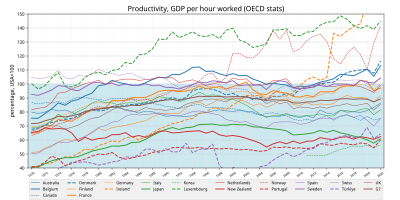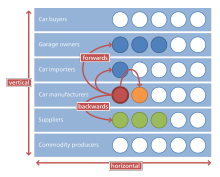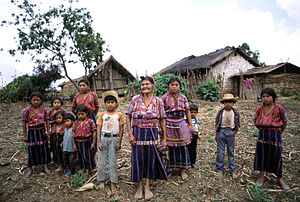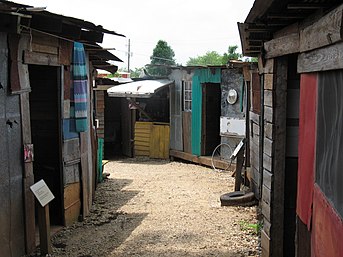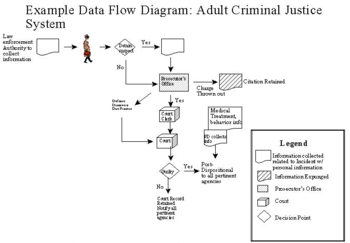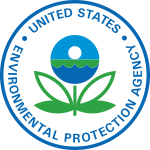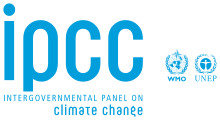search term: emotional distress Wikipedia Page
In medicine, distress is an aversive state in which a person is unable to completely adapt to difficult situations and their resulting effects and shows maladaptive behaviors.[1] It can be evident in the presence of various phenomena, such as inappropriate social interaction (e.g., aggression, passivity, or withdrawal).
search term: race Wikipedia Page
Race, RACE or The Race may refer to:
search term: embankments Wikipedia Page
Embankment may refer to:
search term: structural vulnerability Wikipedia Page
Structural vulnerability is a distinct likelihood of encountering major difficulties within the family atmosphere or the threat to the family itself because of such deficient capital resources as money, education, access to health care, or important/vital information.
search term: Global North Wikipedia Page
Global North and Global South are terms that denote a method of grouping countries based on their defining characteristics with regard to socioeconomics and politics. According to UN Trade and Development (UNCTAD), the Global South broadly comprises Africa, Latin America and the Caribbean, Asia (excluding Israel, Japan, and South Korea), and Oceania (excluding Australia and New Zealand).[1][3][a] Most of the Global South's countries are commonly identified as lacking in their standard of living, which includes having lower incomes, high levels of poverty, high population growth rates, inadequate housing, limited educational opportunities, and deficient health systems, among other issues.[b] Additionally, these countries' cities are characterized by their poor infrastructure.[c] Opposite to the Global South is the Global North, which the UNCTAD describes as broadly comprising Northern America and Europe, Israel, Japan, South Korea, Australia, and New Zealand.[1][3][a] As such, the two terms do not refer to the Northern Hemisphere or the Southern Hemisphere, as many of the Global South's countries are geographically located in the former and, similarly, a number of the Global North's countries are geographically located in the latter.[4]
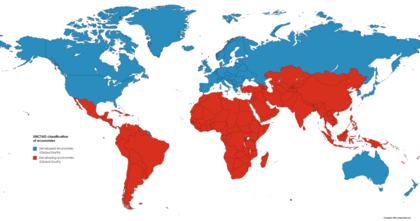
search term: coping strategies Wikipedia Page
Coping refers to conscious or unconscious strategies used to reduce and manage unpleasant emotions. Coping strategies can be cognitions or behaviors and can be individual or social. To cope is to deal with struggles and difficulties in life.[1] It is a way for people to maintain their mental and emotional well-being.[2] Everybody has ways of handling difficult events that occur in life, and that is what it means to cope. Coping can be healthy and productive, or destructive and unhealthy. It is recommended that an individual cope in ways that will be beneficial and healthy. "Managing your stress well can help you feel better physically and psychologically and it can impact your ability to perform your best."[3]
search term: colonisation Wikipedia Page
Colonization (British English: colonisation) is a process of establishing occupation of or control over foreign territories or peoples for the purpose of cultivation, trade, exploitation or settlement, setting up coloniality and often colonies, such as for agriculture, commonly pursued and maintained by, but distinct from, imperialism, mercantilism, or colonialism.[1][2][3][4] Colonization is sometimes used synonymously with settling, as with colonisation in biology.

search term: integrated strategies Wikipedia Page
Integrated Strategies is a global management consulting firm specializing in supply chain, strategic sourcing, logistics,[1] and Six-Sigma.[2] Founded in 1990,[1] the company has worked with over 200 companies worldwide. It is known for two things: taking out price/costs while enhancing supply chain performance and transferring the knowledge, content and tools to clients so they can replicate and sustain the results without external help.[3] The company reports its team averages about 20 years of experience and has developed more than 200 commodity strategies.[4]
search term: sea walls Wikipedia Page
A seawall (or sea wall) is a form of coastal defense constructed where the sea, and associated coastal processes, impact directly upon the landforms of the coast. The purpose of a seawall is to protect areas of human habitation, conservation, and leisure activities from the action of tides, waves, or tsunamis.[1] As a seawall is a static feature, it will conflict with the dynamic nature of the coast and impede the exchange of sediment between land and sea.[2]

search term: caste Wikipedia Page
A caste is a fixed social group into which an individual is born within a particular system of social stratification: a caste system. Within such a system, individuals are expected to marry exclusively within the same caste (endogamy), follow lifestyles often linked to a particular occupation, hold a ritual status observed within a hierarchy, and interact with others based on cultural notions of exclusion, with certain castes considered as either more pure or more polluted than others.[1][2][3] The term "caste" is also applied to morphological groupings in eusocial insects such as ants, bees, and termites.[4]

search term: labour productivity Wikipedia Page
Workforce productivity is the amount of goods and services that a group of workers produce in a given amount of time. It is one of several types of productivity that economists measure. Workforce productivity, often referred to as labor productivity, is a measure for an organisation or company, a process, an industry, or a country.
search term: Vertical integration Wikipedia Page
In microeconomics, management and international political economy, vertical integration, also referred to as vertical consolidation, is an arrangement in which the supply chain of a company is integrated and owned by that company. Usually each member of the supply chain produces a different product or (market-specific) service, and the products combine to satisfy a common need.[1] It contrasts with horizontal integration, wherein a company produces several items that are related to one another. Vertical integration has also described management styles that bring large portions of the supply chain not only under a common ownership but also into one corporation (as in the 1920s when the Ford River Rouge Complex began making much of its own steel rather than buying it from suppliers).
search term: Climate justice Wikipedia Page
Climate justice is a type of environmental justice[1] that focuses on the unequal impacts of climate change on marginalized or otherwise vulnerable populations.[2] Climate justice seeks to achieve an equitable distribution of both the burdens of climate change and the efforts to mitigate climate change.[3] The economic burden of climate change mitigation is estimated by some at around 1% to 2% of GDP.[4][5] Climate justice examines concepts such as equality, human rights, collective rights, justice and the historical responsibilities for climate change.[6]

search term: social justice Wikipedia Page
This is an accepted version of this page
search term: urban migration Wikipedia Page
Urbanization (or urbanisation in British English) is the population shift from rural to urban areas, the corresponding decrease in the proportion of people living in rural areas, and the ways in which societies adapt to this change. It can also mean population growth in urban areas instead of rural ones.[1] It is predominantly the process by which towns and cities are formed and become larger as more people begin living and working in central areas.[2]
search term: labour migration Wikipedia Page
A migrant worker is a person who migrates within a home country or outside it to pursue work. Migrant workers usually do not have an intention to stay permanently in the country or region in which they work.[1]
search term: occupational hazards Wikipedia Page
An occupational hazard is a hazard experienced in the workplace. This encompasses many types of hazards, including chemical hazards, biological hazards (biohazards), psychosocial hazards, and physical hazards. In the United States, the National Institute for Occupational Safety and Health (NIOSH) conduct workplace investigations and research addressing workplace health and safety hazards resulting in guidelines.[1] The Occupational Safety and Health Administration (OSHA) establishes enforceable standards to prevent workplace injuries and illnesses.[2] In the EU, a similar role is taken by EU-OSHA.
search term: multidimensional poverty Wikipedia Page
Multidimensional Poverty Indices uses a range of indicators to calculate a summary poverty figure for a given population, in which a larger figure indicates a higher level of poverty. This figure considers both the proportion of the population that is deemed poor and the 'breadth' of poverty experienced by these 'poor' households, following the Alkire & Foster 'counting method'.[1] The method was developed following increased criticism of monetary and consumption-based poverty measures, seeking to capture the deprivations in non-monetary factors that contribute towards well-being. While there is a standard set of indicators, dimensions, cutoffs and thresholds used for a 'Global MPI',[2] the method is flexible and there are many examples of poverty studies that modify it to best suit their environment. The methodology has been mainly, but not exclusively,[3] applied to developing countries.
search term: ethnicity Wikipedia Page
An ethnicity or ethnic group is a group of people who identify with each other on the basis of perceived shared attributes that distinguish them from other groups. Those attributes can include a people of a common language, culture, common sets of ancestry, traditions, society, religion, history, or social treatment.[1][2] The term ethnicity is sometimes used interchangeably with the term nation, particularly in cases of ethnic nationalism.

search term: socioeconomic class Wikipedia Page
A social class or social stratum is a grouping of people into a set of hierarchical social categories,[1] the most common being the working class, middle class, and upper class. Membership of a social class can for example be dependent on education, wealth, occupation, income, and belonging to a particular subculture or social network.[2]
search term: violent conflict Wikipedia Page
War is an armed conflict[a] between the armed forces of states, or between governmental forces and armed groups that are organized under a certain command structure and have the capacity to sustain military operations, or between such organized groups.[2] It is generally characterized by extreme violence, destruction, and mortality, using regular or irregular military forces. Warfare refers to the common activities and characteristics of types of war, or of wars in general.[3] Total war is warfare that is not restricted to purely legitimate military targets, and can result in massive civilian or other non-combatant suffering and casualties.
search term: global inequality Wikipedia Page
International inequality refers to inequality between countries, as compared to global inequality, which is inequality between people across countries. International inequality research has primarily been concentrated on the rise of international income inequality, but other aspects include educational and health inequality,[1] as well as differences in medical access. Reducing inequality within and among countries is the 10th goal of the UN Sustainable Development Goals and ensuring that no one is left behind is central to achieving them.[2] Inequality can be measured by metrics such as the Gini coefficient.

search term: refugees Wikipedia Page
A refugee, according to the United Nations High Commissioner for Refugees (UNHCR), is a person "forced to flee their own country and seek safety in another country. They are unable to return to their own country because of feared persecution as a result of who they are, what they believe in or say, or because of armed conflict, violence or serious public disorder."[2] Such a person may be called an asylum seeker until granted refugee status by a contracting state or by the UNHCR[3] if they formally make a claim for asylum.[4]

search term: Attribution science Wikipedia Page
Extreme event attribution, also known as attribution science, is a relatively new field of study in meteorology and climate science that tries to measure how ongoing climate change directly affects extreme events (rare events), for example extreme weather events.[1][2] Attribution science aims to determine which such recent events can be explained by or linked to a warming atmosphere and are not simply due to natural variations.[3]
search term: equitable development Wikipedia Page
Social development theory attempts to explain qualitative changes in the structure and framework of society, that help the society to better realize aims and objectives. Development can be defined in a manner applicable to all societies at all historical periods as an upward ascending movement featuring greater levels of energy, efficiency, quality, productivity, complexity, comprehension, creativity, mastery, enjoyment and accomplishment.[1] Development is a process of social change, not merely a set of policies and programs instituted for some specific results. During the last five centuries this process has picked up in speed and intensity, and during the last five decades has witnessed a marked surge in acceleration.[2]
search term: structural racism Wikipedia Page
Societal racism is a type of racism based on a set of institutional, historical, cultural and interpersonal practices within a society that places one or more social or ethnic groups in a better position to succeed and disadvantages other groups so that disparities develop between the groups.[1] Societal racism has also been called structural racism, because, according to Carl E. James, society is structured in a way that excludes substantial numbers of people from minority backgrounds from taking part in social institutions.[2] Societal racism is sometimes referred to as systemic racism as well.[3] Societal racism is a form of societal discrimination.[4]
search term: democratic debate Wikipedia Page
Since 1983, the Democratic Party of the United States holds a few debates between candidates for the Democratic nomination in presidential elections during the primary election season. Unlike debates between party-nominated candidates, which have been organized by the bi-partisan Commission on Presidential Debates since 1988, debates between candidates for party nomination are organized by mass media outlets.
search term: technological innovation Wikipedia Page
Technological innovation is an extended concept of innovation. While innovation is a rather well-defined concept, it has a broad meaning to many people, and especially numerous understanding in the academic and business world.[1]
search term: climate action Wikipedia Page
Climate action (or climate change action) refers to a range of activities, mechanisms, policy instruments, and so forth that aim at reducing the severity of human-induced climate change and its impacts. "More climate action" is a central demand of the climate movement.[1] Climate inaction is the absence of climate action.
search term: ecosystem services Wikipedia Page
Ecosystem services are the various benefits that humans derive from healthy ecosystems. These ecosystems, when functioning well, offer such things as provision of food, natural pollination of crops, clean air and water, decomposition of wastes, or flood control. Ecosystem services are grouped into four broad categories of services. There are provisioning services, such as the production of food and water. Regulating services, such as the control of climate and disease. Supporting services, such as nutrient cycles and oxygen production. And finally there are cultural services, such as spiritual and recreational benefits.[1] Evaluations of ecosystem services may include assigning an economic value to them.

search term: Sustainable Development Goals Wikipedia Page
The 2030 Agenda for Sustainable Development, adopted by all United Nations members in 2015, created 17 world Sustainable Development Goals (SDGs). The aim of these global goals is "peace and prosperity for people and the planet"[1][2] – while tackling climate change and working to preserve oceans and forests. The SDGs highlight the connections between the environmental, social and economic aspects of sustainable development. Sustainability is at the center of the SDGs, as the term sustainable development implies.
search term: Indigenous knowledge Wikipedia Page
Traditional knowledge (TK), indigenous knowledge (IK),[1] folk knowledge, and local knowledge generally refers to knowledge systems embedded in the cultural traditions of regional, indigenous, or local communities.[2]

search term: urban transformation Wikipedia Page
Urban renewal (also called urban regeneration in the United Kingdom and urban redevelopment in the United States[1]) is a program of land redevelopment often used to address urban decay in cities.[2] Urban renewal involves the clearing out of blighted areas in inner cities in favour of new housing, businesses, and other developments.

search term: transitional economies Wikipedia Page
A transition economy or transitional economy is an economy which is changing from a centrally planned economy to a market economy.[1] Transition economies undergo a set of structural transformations intended to develop market-based institutions. These include economic liberalization, where prices are set by market forces rather than by a central planning organization. In addition to this trade barriers are removed, there is a push to privatize state-owned enterprises and resources, state and collectively run enterprises are restructured as businesses, and a financial sector is created to facilitate macroeconomic stabilization and the movement of private capital.[2] The process has been applied in China, the former Soviet Union and Eastern bloc countries of Europe and some Third world countries, and detailed work has been undertaken on its economic and social effects.
search term: Paris Agreement Wikipedia Page
The Paris Agreement (also called the Paris Accords or Paris Climate Accords) is an international treaty on climate change that was signed in 2016.[3] The treaty covers climate change mitigation, adaptation, and finance. The Paris Agreement was negotiated by 196 parties at the 2015 United Nations Climate Change Conference near Paris, France. As of February 2023, 195 members of the United Nations Framework Convention on Climate Change (UNFCCC) are parties to the agreement. Of the three UNFCCC member states which have not ratified the agreement, the only major emitter is Iran. The United States withdrew from the agreement in 2020,[4] but rejoined in 2021.[5]
search term: economic activity Wikipedia Page
Economics (/ˌɛkəˈnɒmɪks, ˌiːkə-/)[1][2] is a social science that studies the production, distribution, and consumption of goods and services.[3][4]

search term: water quality Wikipedia Page
Water quality refers to the chemical, physical, and biological characteristics of water based on the standards of its usage.[1][2] It is most frequently used by reference to a set of standards against which compliance, generally achieved through treatment of the water, can be assessed. The most common standards used to monitor and assess water quality convey the health of ecosystems, safety of human contact, extent of water pollution and condition of drinking water. Water quality has a significant impact on water supply and often determines supply options.[3]
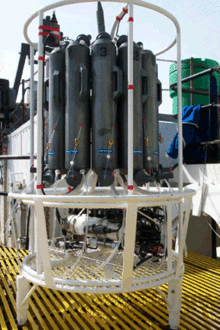
search term: 2030 Agenda Wikipedia Page
The 2030 Agenda for Sustainable Development, adopted by all United Nations members in 2015, created 17 world Sustainable Development Goals (SDGs). The aim of these global goals is "peace and prosperity for people and the planet"[1][2] – while tackling climate change and working to preserve oceans and forests. The SDGs highlight the connections between the environmental, social and economic aspects of sustainable development. Sustainability is at the center of the SDGs, as the term sustainable development implies.
search term: social norms Wikipedia Page
A social norm is a shared standard of acceptable behavior by a group.[1] Social norms can both be informal understandings that govern the behavior of members of a society, as well as be codified into rules and laws.[2] Social normative influences or social norms, are deemed to be powerful drivers of human behavioural changes and well organized and incorporated by major theories which explain human behaviour.[3] Institutions are composed of multiple norms. Norms are shared social beliefs about behavior; thus, they are distinct from "ideas", "attitudes", and "values", which can be held privately, and which do not necessarily concern behavior.[4] Norms are contingent on context, social group, and historical circumstances.[5]

search term: social protection Wikipedia Page
Social protection, as defined by the United Nations Research Institute for Social Development, is concerned with preventing, managing, and overcoming situations that adversely affect people's well-being.[1] Social protection consists of policies and programs designed to reduce poverty and vulnerability by promoting efficient labour markets, diminishing people's exposure to risks, and enhancing their capacity to manage economic and social risks, such as unemployment, exclusion, sickness, disability, old age.[2], and enhancing their capacity to manage economic and social risks, such as unemployment, exclusion, sickness, disability, and old age. An emerging approach within social protection frameworks is Adaptive Social Protection, which integrates disaster risk management and climate change adaptation to strengthen resilience against shocks.It is one of the targets of the United Nations Sustainable Development Goal 10 aimed at promoting greater equality.[3]
search term: Civic engagement Wikipedia Page
Civic engagement or civic participation is any individual or group activity addressing issues of public concern.[1] Civic engagement includes communities working together or individuals working alone in both political and non-political actions to protect public values or make a change in a community. The goal of civic engagement is to address public concerns and promote the quality of the community.

search term: planetary health Wikipedia Page
Planetary health is a multi- and transdisciplinary research paradigm, a new science for exceptional action,[1] and a global movement. Planetary health refers to "the health of human civilization and the state of the natural systems on which it depends". In 2015, the Rockefeller Foundation–Lancet Commission on Planetary Health launched the concept which is [2] currently being developed towards a new health science with over 25 areas of expertise.[3]
search term: disaster risk reduction Wikipedia Page
Disaster risk reduction aims to make disasters less likely to happen. The approach, also called DRR or disaster risk management, also aims to make disasters less damaging when they do occur. DRR aims to make communities stronger and better prepared to handle disasters. In technical terms, it aims to make them more resilient or less vulnerable. When DRR is successful, it makes communities less the vulnerable because it mitigates the effects of disasters.[2] This means DRR can make risky events fewer and less severe. Climate change can increase climate hazards. So development efforts often consider DRR and climate change adaptation together.[3]

search term: Indigenous Peoples Wikipedia Page
There is no generally accepted definition of Indigenous peoples,[a][1][2][3] although in the 21st century the focus has been on self-identification, cultural difference from other groups in a state, a special relationship with their traditional territory, and an experience of subjugation and discrimination under a dominant cultural model.[4]
search term: climate adaptation Wikipedia Page
Climate change adaptation is the process of adjusting to the effects of climate change. These can be both current or expected impacts.[1] Adaptation aims to moderate or avoid harm for people, and is usually done alongside climate change mitigation. It also aims to exploit opportunities. Humans may also intervene to help adjust for natural systems.[1] There are many adaptation strategies or options. For instance, building hospitals that can withstand natural disasters, roads that don't get washed away in the face of rains and floods.[2] They can help manage impacts and risks to people and nature. The four types of adaptation actions are infrastructural, institutional, behavioural and nature-based options.[3]: Figure 16.5 Some examples of these are building seawalls or inland flood defenses, providing new insurance schemes, changing crop planting times or varieties, and installing green roofs or green spaces. Adaptation can be reactive (responding to climate impacts as they happen) or proactive (taking steps in anticipation of future climate change).
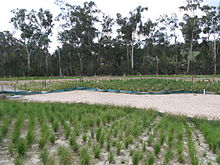
search term: universal health coverage Wikipedia Page
Universal health care (also called universal health coverage, universal coverage, or universal care) is a health care system in which all residents of a particular country or region are assured access to health care. It is generally organized around providing either all residents or only those who cannot afford on their own, with either health services or the means to acquire them, with the end goal of improving health outcomes.[1]

search term: energy poverty Wikipedia Page
In developing countries and some areas of more developed countries, energy poverty is lack of access to modern energy services in the home.[1] In 2022, 759 million people lacked access to consistent electricity and 2.6 billion people used dangerous and inefficient cooking systems.[2] Their well-being is negatively affected by very low consumption of energy, use of dirty or polluting fuels, and excessive time spent collecting fuel to meet basic needs.
search term: human displacement Wikipedia Page
A refugee, according to the United Nations High Commissioner for Refugees (UNHCR), is a person "forced to flee their own country and seek safety in another country. They are unable to return to their own country because of feared persecution as a result of who they are, what they believe in or say, or because of armed conflict, violence or serious public disorder."[2] Such a person may be called an asylum seeker until granted refugee status by a contracting state or by the UNHCR[3] if they formally make a claim for asylum.[4]

search term: ecosystem health Wikipedia Page
Ecosystem health is a metaphor used to describe the condition of an ecosystem.[1][2] Ecosystem condition can vary as a result of fire, flooding, drought, extinctions, invasive species, climate change, mining, fishing, farming or logging, chemical spills, and a host of other reasons. There is no universally accepted benchmark for a healthy ecosystem,[3] rather the apparent health status of an ecosystem can vary depending upon which health metrics are employed in judging it[4] and which societal aspirations are driving the assessment. Advocates of the health metaphor argue for its simplicity as a communication tool. "Policy-makers and the public need simple, understandable concepts like health."[5] Some critics [6] worry that ecosystem health, a "value-laden construct", can be "passed off as science to unsuspecting policy makers and the public."[7] However, this term is often used in portraying the state of ecosystems worldwide and in conservation and management. For example, scientific journals and the UN often use the terms planetary and ecosystem health, such as the recent journal The Lancet Planetary Health.
search term: income inequality Wikipedia Page
In economics, income distribution covers how a country's total GDP is distributed amongst its population.[1] Economic theory and economic policy have long seen income and its distribution as a central concern. Unequal distribution of income causes economic inequality which is a concern in almost all countries around the world.[2][3]
search term: Climate Change Education Wikipedia Page
Climate change education (CCE) is education that aims to address and develop effective responses to climate change. It helps learners understand the causes and consequences of climate change, prepares them to live with the impacts of climate change and empowers learners to take appropriate actions to adopt more sustainable lifestyles.[1] Climate change and climate change education are global challenges that can be anchored in the curriculum in order to provide local learning and widen up mindset shifts on how climate change can be mitigated.[2] In such as case CCE is more than climate change literacy but understanding ways of dealing with climate[3]

search term: Health Impact Assessment Wikipedia Page
Health impact assessment (HIA) is defined as "a combination of procedures, methods, and tools by which a policy, program, or project may be judged as to its potential effects on the health of a population, and the distribution of those effects within the population." (ECHP 1999, p. 4)
search term: sexual and reproductive health Wikipedia Page
Sexual and reproductive health (SRH)[1] is a field of research, health care, and social activism that explores the health of an individual's reproductive system and sexual well-being during all stages of their life.[2][3][4] Sexual and reproductive health is more commonly defined as sexual and reproductive health and rights,[5] to encompass individual agency to make choices about their sexual and reproductive lives.

search term: Generalized Linear Model Wikipedia Page
In statistics, a generalized linear model (GLM) is a flexible generalization of ordinary linear regression. The GLM generalizes linear regression by allowing the linear model to be related to the response variable via a link function and by allowing the magnitude of the variance of each measurement to be a function of its predicted value.
search term: Attention Deficit Hyperactivity Disorder Wikipedia Page
Attention-deficit/hyperactivity disorder (ADHD)[4] is a neurodevelopmental disorder characterized by executive dysfunction occasioning symptoms of inattention, hyperactivity, impulsivity and emotional dysregulation that are excessive and pervasive, impairing in multiple contexts, and developmentally-inappropriate.[10]
search term: National Health Service Wikipedia Page
The National Health Service (NHS) is the umbrella term for the publicly funded healthcare systems of the United Kingdom, comprising the NHS in England, NHS Scotland and NHS Wales. Health and Social Care in Northern Ireland was created separately and is often locally referred to as "the NHS".[2] The original three systems were established in 1948 (NHS Wales/GIG Cymru was founded in 1969) as part of major social reforms following the Second World War. The founding principles were that services should be comprehensive, universal and free at the point of delivery—a health service based on clinical need, not ability to pay.[3] Each service provides a comprehensive range of health services, provided without charge for residents of the United Kingdom apart from dental treatment and optical care.[4] In England, NHS patients have to pay prescription charges; some, such as those aged over 60, or those on certain state benefits, are exempt.[5]

search term: Criminal Justice System Wikipedia Page
Criminal justice is the delivery of justice to those who have been accused of committing crimes. The criminal justice system is a series of government agencies and institutions. Goals include the rehabilitation of offenders, preventing other crimes, and moral support for victims. The primary institutions of the criminal justice system are the police, prosecution and defense lawyers, the courts and the prisons system.
search term: community-based organizations Wikipedia Page
Community organization or community based organization refers to organization aimed at making desired improvements to a community's social health, well-being, and overall functioning. Community organization occurs in geographically, psychosocially, culturally, spiritually, and digitally bounded communities.
search term: environmental justice Wikipedia Page
Environmental justice is a social movement that addresses injustice that occurs when poor or marginalized communities are harmed by hazardous waste, resource extraction, and other land uses from which they do not benefit.[1][2] The movement has generated hundreds of studies showing that exposure to environmental harm is inequitably distributed.[3]
search term: greenhouse gas Wikipedia Page
This is an accepted version of this page
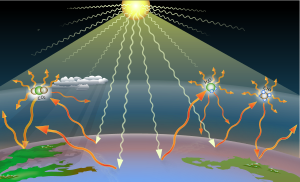
search term: Environmental Protection Agency Wikipedia Page
The Environmental Protection Agency (EPA) is an independent agency of the United States government tasked with environmental protection matters.[2] President Richard Nixon proposed the establishment of EPA on July 9, 1970; it began operation on December 2, 1970, after Nixon signed an executive order.[3] The order establishing the EPA was ratified by committee hearings in the House and Senate.
search term: zero-emission vehicles Wikipedia Page
A zero-emission vehicle (ZEV) is a vehicle that does not emit exhaust gas or other pollutants from the onboard source of power.[1][2] The California definition also adds that this includes under any and all possible operational modes and conditions. This is because under cold-start conditions for example, internal combustion engines tend to produce the maximum amount of pollutants.[3] In a number of countries and states, transport is cited as the main source of greenhouse gases (GHG) and other pollutants. The desire to reduce this is thus politically strong.

search term: California Air Resources Board Wikipedia Page
The California Air Resources Board (CARB or ARB) is an agency of the government of California that aims to reduce air pollution. Established in 1967 when then-governor Ronald Reagan signed the Mulford-Carrell Act, combining the Bureau of Air Sanitation and the Motor Vehicle Pollution Control Board, CARB is a department within the cabinet-level California Environmental Protection Agency.
search term: Regulatory Impact Analysis Wikipedia Page
A regulatory impact analysis or regulatory impact assessment (RIA) is a document created before a new government regulation is introduced. RIAs are produced in many countries, although their scope, content, role and influence on policy making vary.
search term: Health Insurance Portability and Accountability Act Wikipedia Page
The Health Insurance Portability and Accountability Act of 1996 (HIPAA or the Kennedy–Kassebaum Act[1][2]) is a United States Act of Congress enacted by the 104th United States Congress and signed into law by President Bill Clinton on August 21, 1996.[3] It aimed to alter the transfer of healthcare information, stipulated the guidelines by which personally identifiable information maintained by the healthcare and healthcare insurance industries should be protected from fraud and theft,[4] and addressed some limitations on healthcare insurance coverage. It generally prohibits healthcare providers and businesses called covered entities from disclosing protected information to anyone other than a patient and the patient's authorized representatives without their consent. The bill does not restrict patients from receiving information about themselves (with limited exceptions).[5] Furthermore, it does not prohibit patients from voluntarily sharing their health information however they choose, nor does it require confidentiality where a patient discloses medical information to family members, friends or other individuals not employees of a covered entity.
search term: structural equation modeling Wikipedia Page
Structural equation modeling (SEM) is a diverse set of methods used by scientists doing both observational and experimental research. SEM is used mostly in the social and behavioral sciences but it is also used in epidemiology,[2] business,[3] and other fields. A definition of SEM is difficult without reference to technical language, but a good starting place is the name itself.

search term: climate emergency Wikipedia Page
Climate emergency may refer to:
search term: Intergovernmental Panel on Climate Change Wikipedia Page
The Intergovernmental Panel on Climate Change (IPCC) is an intergovernmental body of the United Nations. Its job is to advance scientific knowledge about climate change caused by human activities.[1] The World Meteorological Organization (WMO) and the United Nations Environment Programme (UNEP) set up the IPCC in 1988. The United Nations endorsed the creation of the IPCC later that year.[2] It has a secretariat in Geneva, Switzerland, hosted by the WMO. It has 195 member states who govern the IPCC.[3] The member states elect a bureau of scientists to serve through an assessment cycle. A cycle is usually six to seven years. The bureau selects experts in their fields to prepare IPCC reports.[4] There is a formal nomination process by governments and observer organizations to find these experts. The IPCC has three working groups and a task force, which carry out its scientific work.[4]
search term: renewable energy Wikipedia Page
Renewable energy (or green energy) is energy from renewable natural resources that are replenished on a human timescale. The most widely used renewable energy types are solar energy, wind power, and hydropower. Bioenergy and geothermal power are also significant in some countries. Some also consider nuclear power a renewable power source, although this is controversial. Renewable energy installations can be large or small and are suited for both urban and rural areas. Renewable energy is often deployed together with further electrification. This has several benefits: electricity can move heat and vehicles efficiently and is clean at the point of consumption.[1][2] Variable renewable energy sources are those that have a fluctuating nature, such as wind power and solar power. In contrast, controllable renewable energy sources include dammed hydroelectricity, bioenergy, or geothermal power.
search term: neglected tropical diseases Wikipedia Page
Neglected tropical diseases (NTDs) are a diverse group of tropical infections that are common in low-income populations in developing regions of Africa, Asia, and the Americas.[2] They are caused by a variety of pathogens, such as viruses, bacteria, protozoa, and parasitic worms (helminths). These diseases are contrasted with the "big three" infectious diseases (HIV/AIDS, tuberculosis, and malaria), which generally receive greater treatment and research funding.[3] In sub-Saharan Africa, the effect of neglected tropical diseases as a group is comparable to that of malaria and tuberculosis.[4] NTD co-infection can also make HIV/AIDS and tuberculosis more deadly.[5]
search term: National Oceanic and Atmospheric Administration Wikipedia Page
The National Oceanic and Atmospheric Administration (abbreviated as NOAA /ˈnoʊ.ə/ NOH-ə) is an American scientific and regulatory agency charged with forecasting weather, monitoring oceanic and atmospheric conditions, charting the seas, conducting deep-sea exploration, and managing fishing and protection of marine mammals and endangered species in the US exclusive economic zone. The agency is part of the United States Department of Commerce and is headquartered in Silver Spring, Maryland.
search term: Crime Prevention Through Environmental Design Wikipedia Page
Crime prevention through environmental design (CPTED) is an agenda for manipulating the built environment to create safer neighborhoods.
search term: Distributive justice Wikipedia Page
Distributive justice concerns the socially just allocation of resources, goods, opportunity in a society. It is concerned with how to allocate resources fairly among members of a society, taking into account factors such as wealth, income, and social status. Often contrasted with just process and formal equal opportunity, distributive justice concentrates on outcomes (substantive equality). This subject has been given considerable attention in philosophy and the social sciences. Theorists have developed widely different conceptions of distributive justice. These have contributed to debates around the arrangement of social, political and economic institutions to promote the just distribution of benefits and burdens within a society. Most contemporary theories of distributive justice rest on the precondition of material scarcity. From that precondition arises the need for principles to resolve competing interest and claims concerning a just or at least morally preferable distribution of scarce resources.[1]
search term: variance inflation factor Wikipedia Page
In statistics, the variance inflation factor (VIF) is the ratio (quotient) of the variance of a parameter estimate when fitting a full model that includes other parameters to the variance of the parameter estimate if the model is fit with only the parameter on its own.[1] The VIF provides an index that measures how much the variance (the square of the estimate's standard deviation) of an estimated regression coefficient is increased because of collinearity.
search term: organizational justice Wikipedia Page
Greenberg (1987) introduced the concept of organizational justice with regard to how an employee judges the behavior of the organization and the employee's resulting attitude and behaviour.[1] For example, if a firm makes redundant half of the workers, an employee may feel a sense of injustice with a resulting change in attitude and a drop in productivity.

